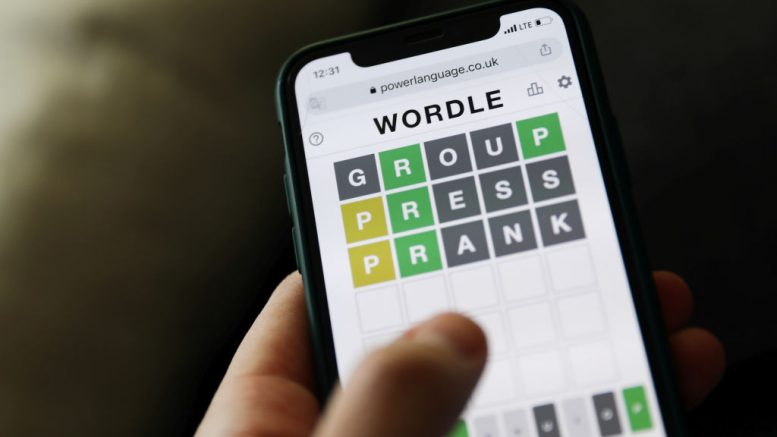In October 2021, Josh Wardle created a virtual game for his partner who loved playing word games. The game was called Wordle, and it is a word guessing game that gives players six tries to guess a five-letter word. The color of the word tiles changes based on how close players get to the actual five-letter word. If the color is gray, that means the letter isn’t in the word. If the color is yellow, it means the letter is in the word, but not in the right position. If the color is green, it means the letter is in the word and in the right position. The goal is for all five of the tiles to be green.
All players are given 24 hours to guess the same five-letter word, and the word resets every day. Those interested in playing Wordle can access it here and those interested in playing previous Wordles can access the Wordle Archive here.
The data company, Morning Consult, found that 14% of Americans said they play Wordle. After further examining the data, they concluded that millennials are the ones who are most interested in and play the game the most. As a matter of fact, a study concluded that “Twenty-six percent respondents in the generation [milennials] said they play Wordle, compared to 18% of Gen Zers, 9% of Gen Xers, and just 5% of baby boomers.” Millennials also seem to be responsible for spreading the word and awareness about the game, whether it be verbally or through social media. Once again, Morning Consult reported that “43% of [survey] respondents who had heard of the game said they first heard about it on social media.”
Wordle has already been compared to another digital game that rose to fame many years ago: Candy Crush. Users have expressed their concerns that Wordle will turn into another version of Candy Crush, meaning that its fame will die out quickly after the initial high number of users. However, arguments have been made against this because players believe that, unlike Candy Crush, Wordle improves analytical thinking and provokes problem solving and discussion between users. For instance, Langford Lessenberry, a student at Butler University, believes that Wordle has helped her connect more with others, like teachers and instructors, in her life. For instance, she stated, “I’ve seen my teachers playing it, and me and my phonetics teacher talk about it every week. My clarinet instructor was playing it as I was going into my lesson this week, so I feel like that [fact] kind of cements that [Wordle] is here to stay.”
The Acronym is hopeful for Wordle’s fate in maintaining its spot as a hot topic for conversations in the near future, and we wish everyone luck in guessing tomorrow’s five-letter word!



Be the first to comment on "New York Times’ Wordle Rises to Fame"